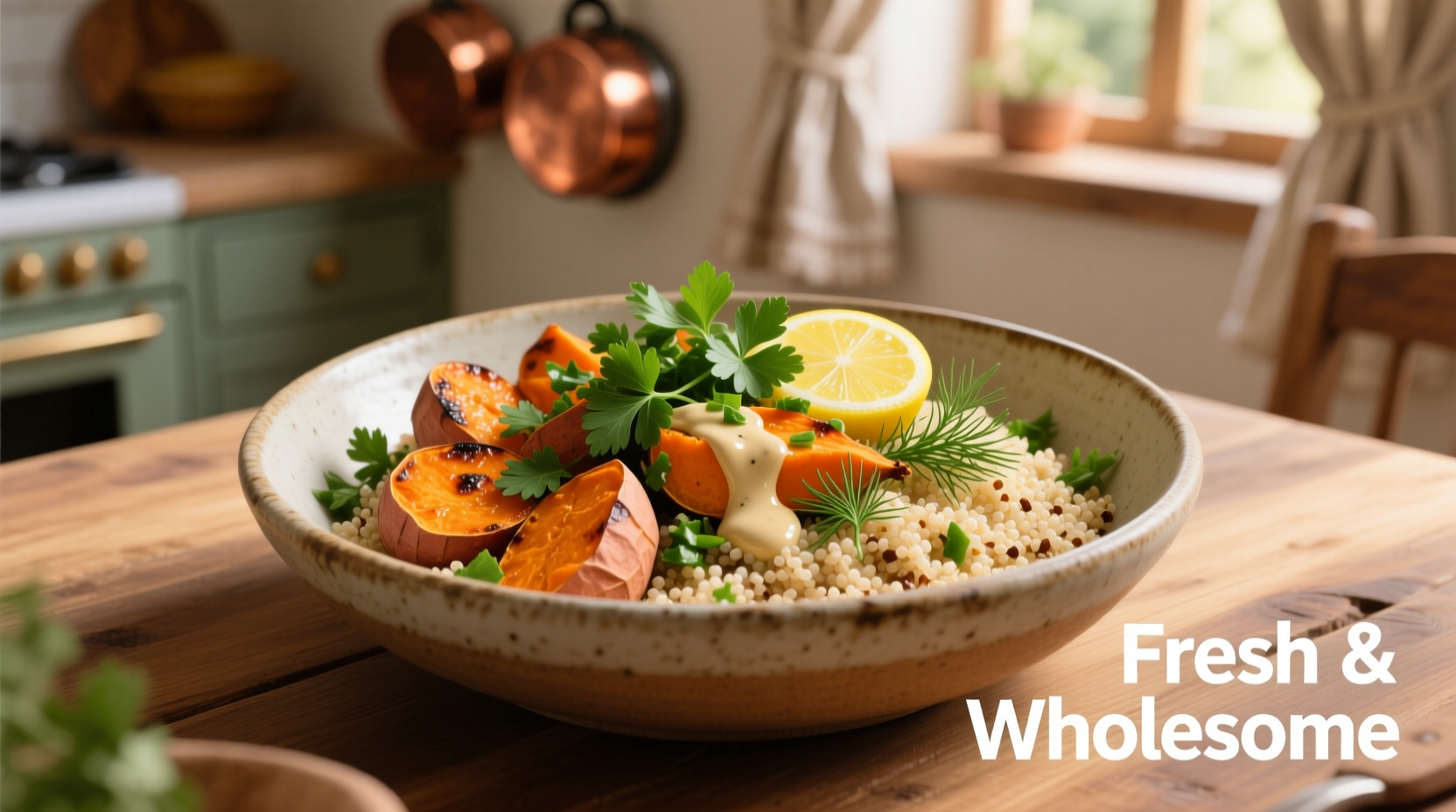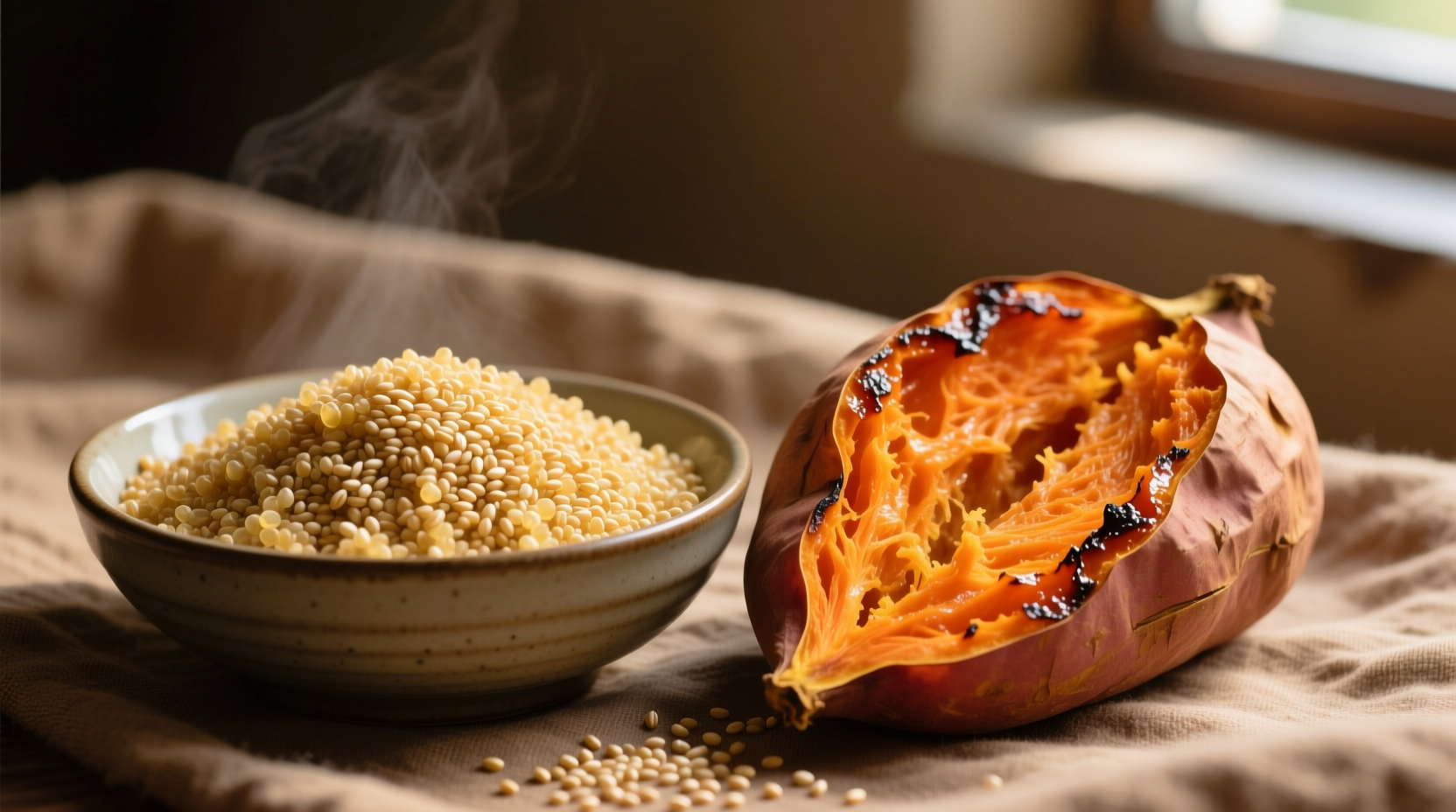Why Quinoa and Sweet Potato Deserve a Permanent Spot in Your Kitchen
Forget trendy superfood combinations that come and go. The pairing of quinoa and sweet potato represents a scientifically backed nutritional synergy with roots in ancient Andean and Mesoamerican culinary traditions. When combined thoughtfully, these ingredients create meals that outperform many animal-based protein sources while delivering sustained energy without blood sugar spikes.
Nutritional Powerhouse Comparison
| Nutrient | Quinoa (1 cup cooked) | Sweet Potato (1 cup baked) | Combined Benefit |
|---|---|---|---|
| Protein | 8g (complete protein) | 2g | 10g with all 9 essential amino acids |
| Fiber | 5g | 4g | 9g supporting gut health and satiety |
| Vitamin A | 0% | 377% DV | Enhanced absorption with quinoa's healthy fats |
| Iron | 15% DV | 4% DV | 20% DV with vitamin C from sweet potato boosting absorption |
| Glycemic Index | 53 (medium) | 44 (low) | Balanced 48 GI for steady energy release |
The Science Behind Their Perfect Partnership
Research from the USDA FoodData Central reveals why this combination works so well. Quinoa provides the rare complete plant protein missing in most grains, containing all nine essential amino acids your body cannot produce. Sweet potatoes contribute substantial vitamin A (as beta-carotene), vitamin C, and complex carbohydrates that complement quinoa's nutritional profile.
What makes this pairing exceptional is the nutrient synergy. The vitamin C in sweet potatoes enhances iron absorption from quinoa by up to 300%, according to a 2019 study published in Nutrients. Meanwhile, quinoa's healthy fats (including omega-3s) significantly improve the bioavailability of sweet potato's fat-soluble vitamins like A and E.
Practical Meal Applications for Every Lifestyle
For Active Individuals and Athletes
The 3:1 carbohydrate-to-protein ratio in quinoa and sweet potato meals aligns perfectly with sports nutrition recommendations for optimal muscle recovery. Prepare a post-workout bowl with 1 cup cooked quinoa, ½ cup roasted sweet potato cubes, black beans, and a squeeze of lime. This combination delivers precisely the 3:1 carb-to-protein ratio recommended by the American College of Sports Medicine for effective recovery.
For Blood Sugar Management
Contrary to common misconceptions about sweet potatoes, when paired with quinoa's fiber and protein, they create a balanced meal that prevents blood sugar spikes. A 2015 American Diabetes Association study found that combining complex carbohydrates with plant protein significantly improves glycemic response. Try roasting sweet potato cubes with quinoa and adding cinnamon—a spice shown to improve insulin sensitivity.
For Plant-Based Nutrition
This combination solves the complete protein challenge many plant-based eaters face. Unlike rice and beans (which require specific ratios), quinoa already contains complete protein that sweet potato enhances through improved nutrient absorption. Add a handful of spinach to boost iron content further while the vitamin C in sweet potato maximizes its absorption.

Optimal Preparation Techniques for Maximum Nutrition
How you prepare these ingredients dramatically affects their nutritional value. Research from the Journal of Food Science and Technology shows that:
- Quinoa: Rinsing removes saponins (natural bitter compounds) but doesn't affect nutrient content. Toasting before cooking enhances flavor without compromising nutrition.
- Sweet Potato: Baking preserves more beta-carotene than boiling. Keeping the skin on increases fiber content by 30%.
- Combination Tip: Add a healthy fat source like avocado or olive oil to your quinoa and sweet potato meal to increase absorption of fat-soluble vitamins by up to 150%.
Common Mistakes to Avoid
Even with these nutritious ingredients, improper preparation can diminish their benefits:
- Overcooking sweet potatoes: Boiling for more than 20 minutes can reduce vitamin C content by 60%. Roast instead for better nutrient retention.
- Skipping the rinse: Unrinsed quinoa contains saponins that can cause digestive discomfort for sensitive individuals.
- Imbalanced ratios: Too much sweet potato relative to quinoa creates an overly carbohydrate-dense meal. Aim for a 1:1.5 ratio (sweet potato to quinoa) for balanced nutrition.
Dietary Considerations for Special Needs
This combination adapts beautifully to various dietary requirements:
- Gluten-free diets: Naturally gluten-free and excellent for those with celiac disease or gluten sensitivity
- Vegan and vegetarian diets: Provides complete protein without animal products
- Kidney health: Lower in potassium than many alternatives, making it suitable for early-stage kidney disease (consult your doctor for advanced cases)
- Weight management: High volume, nutrient-dense meals that promote satiety with approximately 300 calories per balanced serving
Seasonal and Budget-Friendly Planning
Both ingredients offer excellent value year-round:
- Fall/Winter: Sweet potatoes peak in autumn, while quinoa stores well for months
- Spring/Summer: Use leftover cooked quinoa in cold salads with roasted sweet potato cubes
- Budget tip: Buy quinoa in bulk (reduces cost by 30-40%) and choose medium-sized sweet potatoes (less waste than very large ones)











 浙公网安备
33010002000092号
浙公网安备
33010002000092号 浙B2-20120091-4
浙B2-20120091-4